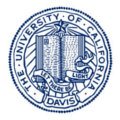
| Experiment Guide |
|
1. Study Guide 2. Read Chromey Ch 2, Melissinos Ch 10 3. Pre-Lab Homework: Chromey chapter 2, Edition 1 Exercises 2, 6, 7, 8, 10 or |
| 4. Summary |
| Related Material |
| 1. Melissinos (2003) Chapter 10. |
| 2. MIT guide |
| 3. Poisson Statistics |
| 4. Error Bars |
| 5. Bevington Problems |
| 6. Chi-Sq dos and don'ts |
| Useful Links |
| 1. Lecture on Systematic Errors |
| 2. Applied Statistics |
Overview
The goal of any scientific experiment is to make quantitative statements about the the physical world. A common question is, are your measurements consistent with a particular theory or not? This question can only be answered by careful analysis, including both systematic uncertainties and random "statistical" error. Experimentalists and theorists both need to understand how experiments work, how they don't exactly work perfectly, and methods of measurement, data analysis and error estimation.
You need to master these techniques before undertaking any of your experiments, and you will use them for the rest of your career in science. We start with statistical errors: measurement, error propagation, and curve fitting. Later we explore methods of detecting, controlling, and estimating systematic errors.
Experience with error analysis and curve fitting is a prerequisite for each experiment, including your first one on nuclear decay! Read the Study Guide, do the Pre-Lab, read Chapter 2 in Chromey, and look at the useful link on error analysis. You will need to have a working knowledge of this material in your first week of class.

